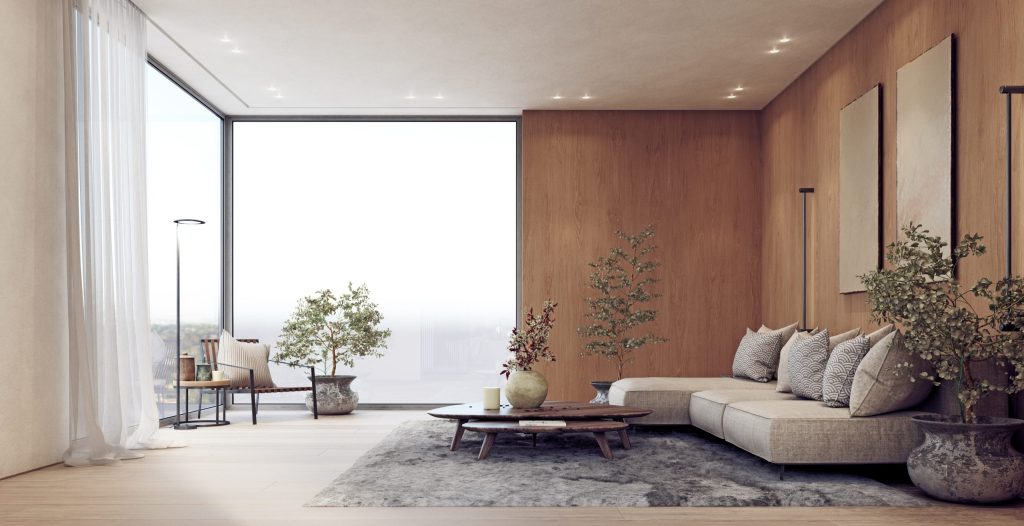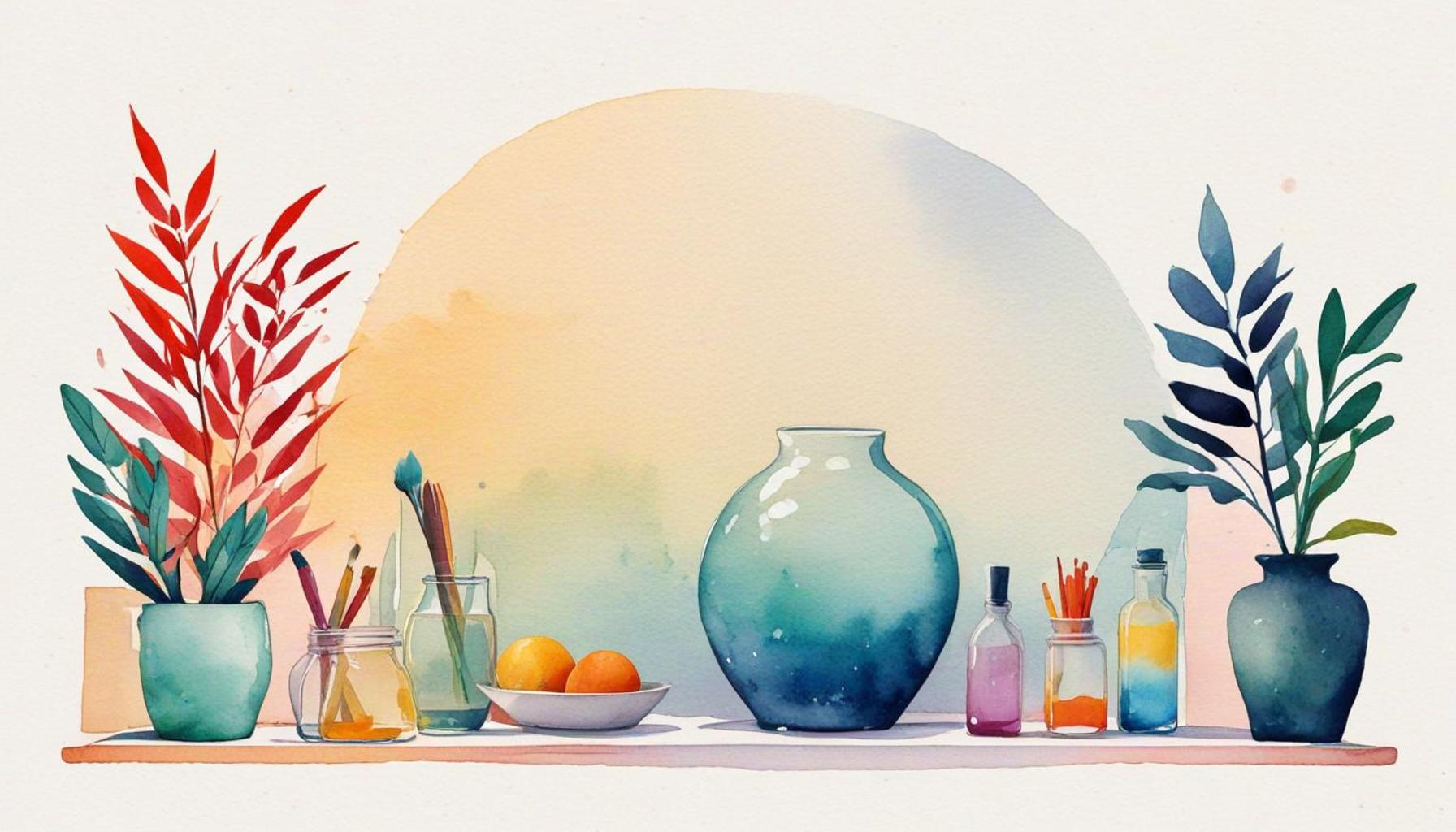The Role of Intention in Curating a Minimalist Life: Selecting the Essential

The Essence of Intention in Minimalism
In a world overwhelmed with choices, the concept of minimalism has emerged as a refreshing approach to living intentionally. Curating a minimalist life transcends mere decluttering of physical spaces; it is fundamentally about making conscious decisions that lead to a more gratifying existence. At the heart of this philosophy lies a powerful force: intention.
To truly embrace minimalism, understanding how intention shapes every facet of life is crucial. Here are some key elements that demonstrate this connection:
- Clarity of Purpose: Defining what truly matters helps filter out excess. For example, consider an individual who prioritizes family time over material possessions. This clarity allows them to assess their belongings and retain only those items that contribute to shared experiences, effectively creating a more meaningful environment.
- Mindful Decision-Making: Every purchase or commitment becomes a reflection of your values. Think about the difference between buying a fast-fashion item versus investing in a timeless, high-quality piece. The former may satisfy a fleeting desire, while the latter aligns with an intention to cultivate a personal style that is sustainable and enduring.
- Simplified Living: Prioritizing essential items fosters peace and reduces stress. By surrounding oneself only with articles that serve a purpose or bring joy, such as a well-loved book or a family heirloom, individuals can create tranquil, uncluttered spaces—both physically and mentally.
Focusing on intention not only aids in making clearer decisions but also encourages individuals to evaluate their emotional connections to possessions. This deeper mindfulness can lead to several beneficial outcomes:
- A stronger sense of community—by choosing to invest time and resources in relationships over material goods.
- Increased appreciation for quality over quantity—selecting fewer, well-crafted items helps individuals enjoy their possessions more fully.
- A more sustainable lifestyle that benefits both the individual and the planet—by reducing consumption, one contributes to a healthier environment.
As we explore the transformative potential of intentional living, we will uncover how selecting only the essentials can reshape not just our surroundings, but also our mindset. When individuals start to ponder the role of intention in their own lives, they often discover a profound truth: less truly is more. Whether it’s the clutter-free home or the intentional friendships cultivated, minimalism invites a more deliberate way of living, one where each choice is a step toward greater fulfillment.
DISCOVER MORE: Click here for practical tips

The Foundation of Intentional Living
At the core of curating a minimalist life is the principle of intention. This foundational concept acts as a lens through which individuals can examine their possessions, relationships, and commitments. By prioritizing intention, one not only identifies what is truly essential but also aligns day-to-day choices with deeper values and aspirations. As individuals embark on this journey towards minimalism, they often encounter a series of transformative realizations that shape their understanding of what it means to live with purpose.
The Process of Discerning What Matters
To effectively select the essentials, one must engage in a critical reflection of their lives. This involves asking pivotal questions that guide decision-making:
- What brings me joy? Identifying the items and experiences that evoke happiness can help pare down unnecessary clutter. For example, a collection of souvenirs from travels may represent meaningless accumulation for some, while for others, each piece may hold treasured memories.
- What aligns with my values? Assessing how each possession or obligation fits into your core beliefs can reinforce or challenge the status quo. A person committed to environmental sustainability may choose to forgo plastic products in favor of reusable options, showcasing their dedication to this principle.
- What contributes to my well-being? Focusing on mental and physical health can prompt the removal of toxic relationships or unfulfilling commitments. This could translate to curating a social circle filled with supportive individuals rather than those who drain energy.
This reflective practice not only clarifies what is important, but it can also initiate a broader exploration of how mindfulness manifests in daily routines. Integrating intention into shopping habits becomes a vital part of this minimalistic approach; consumers are increasingly empowered to make informed choices that reflect sustainability and quality.
The Impact of Intentional Choices
The ripple effect of making intentional choices reaches far beyond the individual. For instance, consider community-oriented initiatives that flourish when people prioritize relationships over possessions. By investing time and energy into nurturing social connections, individuals often report a greater sense of fulfillment and belonging. Additionally, the shift towards selecting fewer, high-quality items cultivates a more satisfying relationship with material goods. This emerging trend suggests a movement away from consumerism towards conscious acquisition.
As one begins to understand the role of intention in curating a minimalist life, opportunities for enhanced emotional well-being become apparent. Choosing thoughtfully leads to less overwhelm and a greater connection to one’s environment. Ultimately, this journey unveils the power of simplicity, encouraging individuals to redefine what it means to live authentically in a world clouded by excess.
The Importance of Intention in Minimalism
When embarking on the journey of minimalism, intention plays a crucial role. It is not simply about eliminating clutter; rather, it is an active process that requires thoughtful reflection and decision-making. By consciously evaluating what truly adds value to our lives, we can better determine our priorities. This introspective effort can lead to a deeper sense of purpose and fulfillment, beyond merely possessing fewer items.
Intentionality in minimalist living compels us to ask important questions: What brings us joy? What enhances our well-being? This examination enables us to sift through the non-essential, allowing us to focus on the elements that genuinely matter. Furthermore, setting a clear intention can influence not just our material possessions but also our relationships, routines, and lifestyle choices.
This philosophy doesn’t just promote a simpler environment; it nurtures a more meaningful existence. By curating our possessions and habits based on defined intentions, we can experience enhanced clarity, reduced stress, and increased creativity. Each choice reflects our values, guiding us toward a life aligned with our true selves.
| Category | Advantages |
|---|---|
| Intentional Living | Encourages self-reflection and value assessment. |
| Clutter Reduction | Leads to a serene environment and increased focus. |
| Improved Well-Being | Fosters mental clarity and emotional stability. |
| Enhanced Creativity | Allows room for new ideas and inspirations to flourish. |
Overall, intentional living within a minimalist framework cultivates a more mindful approach to life. It enables individuals to dedicate time and energy to what enriches their journey, resulting in a lifestyle that is not only satisfying but also deeply aligned with personal ideals.
DISCOVER MORE: Click here for expert tips on maximizing small spaces
Building a Mindful Environment
Creating a minimalist life that thrives on intention is not solely about personal possessions; it extends to crafting an environment that fosters mindfulness and clarity. This shift in focus can considerably enhance an individual’s ability to engage in the present moment, shaping a space that resonates with one’s values and aspirations. A well-curated environment promotes a sense of peace and encourages intentional living, making it easier to embrace simplicity.
The Art of Designing Spaces
Intention becomes a guiding principle when it comes to designing living and working spaces. Rather than a mere rearrangement of furniture or decluttering, this process invites individuals to consider how each item contributes to their overall well-being. It begins with the concept of functional aesthetics, where each piece is evaluated for both its beauty and utility. For example, a minimalist home office may feature a clean desk paired with a comfortable chair, both selected for their function and design, fostering a productive mindset while eliminating distractions.
Another aspect involves embracing natural elements. Research has shown that incorporating plants into indoor spaces can significantly improve mental health by reducing stress and enhancing mood. Engaging with nature not only curates a visually appealing environment but also promotes a deeper connection to the world around us. Individuals are encouraged to choose plants that naturally thrive in their spaces and resonate with their personal taste, adding to the personalized, intentional design.
Intentional Consumption in the Digital Age
With the rise of digital technology, the act of consumption extends far beyond physical items and extends into the virtual realm. Social media platforms, streaming services, and e-commerce have inundated daily life with information and options, often leading to decision fatigue and overwhelm. Thus, practicing intentional consumption online is essential. This may involve curating a social media feed composed of inspiring and uplifting content, which can positively influence mental well-being. By unfollowing accounts that contribute to negativity or comparison, individuals can create a healthier digital environment that reflects their values and interests.
Moreover, intentionality in online shopping involves scrutinizing brands and products before making purchases. Consumers are increasingly seeking out companies that align with their ethics, prioritizing sustainable practices and transparency. For instance, brands that emphasize ethical production methods and environmentally-conscious materials resonate with those aiming to minimize both their ecological footprint and consumeristic impulses.
This intertwining of intentionality with digital choices mirrors the broader quest for a minimalist lifestyle, emphasizing the need for awareness in all areas of life. By evaluating how digital interactions influence emotional and psychological health, individuals can design a more fulfilling and intentional digital existence.
The Challenge of Letting Go
As embarking on a minimalist journey requires making difficult decisions, confronting the challenge of letting go serves as a significant hurdle. Part of this struggle lies in our attachments to items, often stemming from nostalgia or societal expectations. Addressing this emotional component is crucial in the curation process. Engaging in practices such as gratitude journaling can aid individuals in recognizing the value of experiences over material possessions. Acknowledging what an object brought into one’s life allows for a gentler release of items no longer needed.
Ultimately, the journey toward intentional living and minimalism is not purely about subtraction; it also encompasses an opportunity for growth and deepened self-understanding. By embracing this process with awareness and kindness, one can cultivate a more meaningful existence that resonates with their values, nurturing balanced relationships both to possessions and oneself.
LEARN MORE: Click here to discover the benefits of decluttering
Conclusion: Embracing the Essence of Intentional Living
In the pursuit of a minimalist lifestyle, the role of intention is paramount. It serves as the compass guiding individuals through the intricate process of curating their lives, helping them to discern what truly matters amidst the noise of everyday existence. By consciously selecting the essential—be it physical possessions, digital content, or emotional attachments—individuals can sculpt an environment that not only reflects their values but also nurtures their well-being.
As we navigate through a world saturated with choices and distractions, intentional living becomes a radical act of self-care. It invites a more profound engagement with life, encouraging us to be present and appreciate the beauty in simplicity. Intentionality in designing spaces, consuming media, and making mindful purchases fosters clarity, contributing to a lifestyle that prioritizes quality over quantity. Moreover, the emotional journey of letting go offers opportunities for introspection and growth, allowing a deeper connection with oneself and the values one cherishes.
As you embark on or continue your minimalist journey, remember that selecting the essential is not merely about decluttering; it is an ongoing process of awareness, gratitude, and intentional choices. By embracing this ethos, individuals can unlock a path to a more fulfilling and meaningful existence, eliminating the superfluous while celebrating the richness of life’s offerings. This thoughtful approach paves the way for a minimalist lifestyle that is not only sustainable, but also aligned with one’s true self, leading to a life brimming with purpose and peace.


